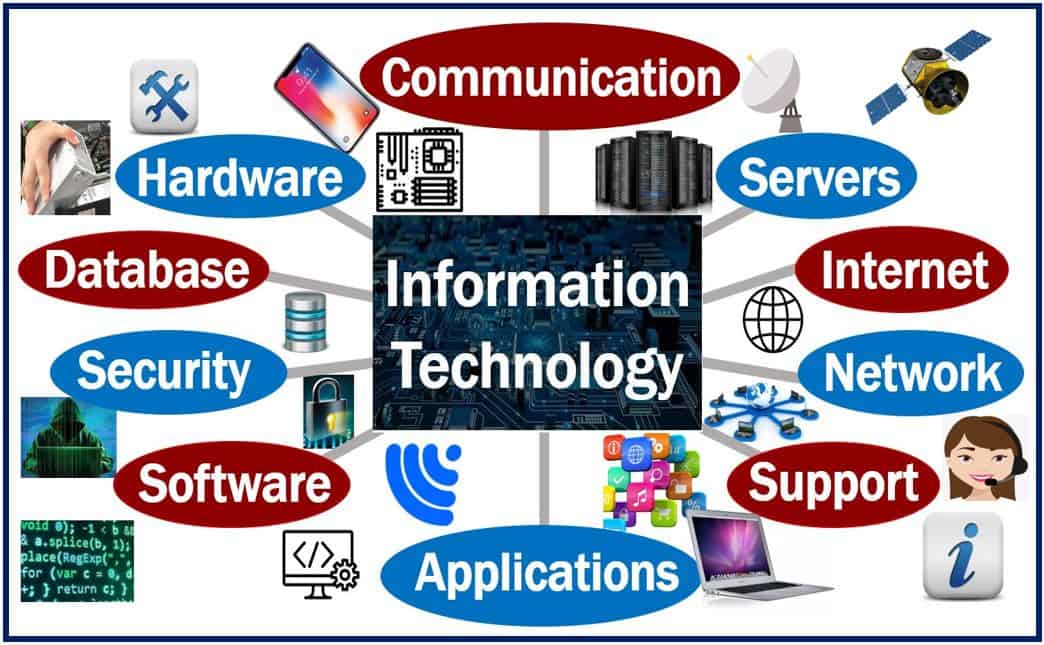Information Technology or IT refers to the development, maintenance, and use of computer software, systems, and networks. It includes their use for the processing and distribution of data. Data means information, facts, statistics, etc., gathered together for reference, storage, or analysis.
As the digital landscape evolves, IT continues to play a pivotal role in transforming data into actionable insights that drive business and societal progress.
The word technology on its own refers to the application of scientific know how for practical purposes.
According to Nature.com, the field covers everything from creating the hardware needed to process and connect various components, to developing software that efficiently and reliably analyzes and distributes data.
Software includes all the computer programs – codes and instructions – within a computer. Computers do not work without software. Hardware, in this context, refers to the physical components of a computer system. The screen (monitor), mouse, and motherboard, for example, are hardware items.
The term Information Technology first appeared in the English language in 1958 in a Harvard Business Review article.

Information technology vs. computer science
The terms information technology and computer science cover similar areas. Although their meanings overlap a lot, their focus is different.
Computer science
We can say computer science or CS. CS focuses entirely on efficiently programming computers. Computer scientists use mathematical algorithms. They study theoretical algorithms and the practical problems that exist in implementing them through computer software and hardware.
Artificial intelligence, computer graphics, and programming are sub-fields of computer science. If you need programming help, you need help in a field of computer science. Software engineering is also part of computer science. Artificial intelligence (AI) refers to software technologies that make computers think and behave like humans. Most robots have artificial intelligence in their software.
Information technology
IT involves installing, organizing, and maintaining computer systems. It also involves designing and operating databases and networks.
For those who want to combine business and IT skills, there’s increasing demand for positions in the management of information technology.
If you want to become an IT professional, you should enjoy using software, installing computer systems, and maintaining databases and networks.
If, on the other hand, you enjoy software design and mathematics, computer science is more up your street.
Regarding the similarities of the two fields, Computer Science Degree Hub says:
“In general, the relationship between information technology and computer science is quite close and interdependent.”
Despite their interconnectedness, each field uniquely contributes to the advancements in our digital world, often collaborating to innovate and solve complex technological challenges.
Moreover, the growth of mobile technology and cloud computing is expanding the scope of IT, creating new opportunities for integration with computer science expertise.
Information technology a relatively new term
According to the Online Etymology Dictionary, the term ‘information technology’ has been around since 1958. It first appeared in the Harvard Business Review. Etymology is the study of the origin of words and how their meanings have evolved.
In 1958, Harold J. Leavitt and Thomas L. Whisler wrote the following in a Harvard Business Review article:
“The new technology does not yet have a single established name. We shall call it information technology. It is composed of several related parts.
